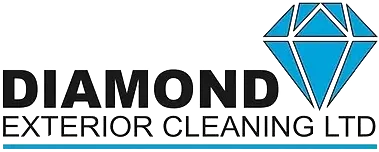When it comes to cleaning exterior surfaces, the terms pressure washing and power washing often get used interchangeably. However, these two methods have distinct differences, and understanding them can help you choose the right approach for your needs. This blog aims to clarify these differences, with a particular emphasis on pressure washing.
Pressure Washing
Pressure washing uses a high-pressure water spray to remove dirt, grime, mould, mildew, and loose paint from surfaces. This method relies solely on the force of the water, making it effective for a variety of surfaces without causing damage. It’s commonly used for cleaning decks, patios, driveways, and walkways. Pressure washing can handle a wide range of cleaning tasks, making it a versatile option for homeowners and businesses alike.
The key component of a pressure washer is the motorised pump. It generates a powerful stream of water, which is directed through a hose and nozzle. The nozzle can be adjusted to vary the pressure and flow rate, allowing for more precise control during cleaning. This adaptability makes pressure washing suitable for both delicate and robust surfaces.
Power Washing
Power washing, on the other hand, includes all the features of pressure washing but adds the element of heated water. The combination of high pressure and hot water makes power washing particularly effective for removing stubborn stains, grease, and oil. This method is ideal for surfaces that can withstand the additional heat, such as concrete or metal.
The heating element in a power washer significantly boosts its cleaning power. Heated water can break down contaminants more effectively than cold water, making it easier to clean heavily soiled areas. However, this added power comes with an increased risk of damage to more fragile surfaces.
Differences in Applications
While both methods are highly effective, their applications differ based on the cleaning requirements and the nature of the surface. Pressure washing is generally preferred for cleaning wood, vinyl, and other delicate surfaces that might be damaged by heat. It’s a versatile method, suitable for residential use, including outdoor furniture, fencing, and siding.
Power washing, due to its enhanced cleaning capabilities, is better suited for industrial and commercial settings. It’s the go-to method for cleaning heavy equipment, large commercial vehicles, and heavily stained concrete surfaces. The ability to use heated water makes it an excellent choice for removing oil stains from driveways or graffiti from walls.
Environmental Considerations
When choosing between pressure washing and power washing, environmental impact is an important consideration. Pressure washing, which uses cold water, tends to be more eco-friendly. It requires less energy as there is no need to heat the water, making it a greener option for routine cleaning tasks.
Power washing, with its reliance on heated water, consumes more energy. This increased energy use translates to a higher carbon footprint. However, for tasks that involve stubborn grime or oil, power washing may be more efficient and require fewer chemical cleaners, which can mitigate some environmental concerns.
Safety Concerns
Both pressure washing and power washing require careful handling to ensure safety. The high-pressure water streams can cause injury if not used properly. Users should wear protective clothing and eyewear and follow manufacturer guidelines to avoid accidents.
Power washing, due to the combination of high pressure and hot water, poses additional safety risks. The hot water can cause burns, and the equipment is typically more complex, requiring a higher level of expertise. It’s often recommended to hire professional services for power washing tasks, especially for large or intricate projects.
Cost Implications
Cost is another factor to consider when deciding between pressure washing and power washing. Pressure washing equipment is generally less expensive to purchase and maintain. It’s a cost-effective solution for homeowners looking to perform regular maintenance on their property.
Power washing equipment, due to the added heating element, tends to be more expensive. The higher initial investment and increased energy costs can make power washing a more costly option in the long run. However, for certain cleaning tasks, the superior results may justify the additional expense.
Conclusion
In summary, pressure washing and power washing are both effective cleaning methods with distinct advantages and applications. Pressure washing, with its high-pressure cold water, offers versatility and is ideal for a wide range of surfaces and cleaning tasks. Power washing, with the added benefit of heated water, provides enhanced cleaning power for more challenging jobs but comes with higher costs and increased safety risks.
Understanding these differences can help you choose the right method for your specific needs, ensuring optimal results and maintaining the integrity of your surfaces. Whether you opt for the versatility of pressure washing or the superior cleaning power of power washing, both methods can significantly improve the appearance and longevity of your property.
